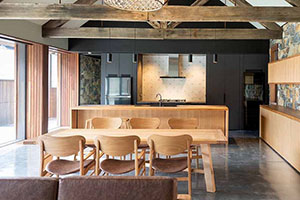 A summary update has been provided for this note in June 2023. This summary reflects updates to this topic on the National Construction Code 2022 and BASIX.
A summary update has been provided for this note in June 2023. This summary reflects updates to this topic on the National Construction Code 2022 and BASIX.
This Note provides an introductory review of the energy use and climate and resource impacts of appliances in residential buildings and factors that influence their performance. Its main focus is on the design stage, but it may also assist designers when they work with specifiers, contractors and clients. Many decisions made during design, construction and equipment installation have significant climate impacts associated with input materials and services, operation and end of life. The extreme urgency of shifting towards a zero-emission economy and society increases the significance of these decisions, which lock-in immediate and long-term climate impacts, and adaptation potential.
This note complements Cutting lifetime residential greenhouse gas (GHG) emissions by Pears (2020), which provides an overview of lifecycle climate and energy impacts and issues in the residential sector.
